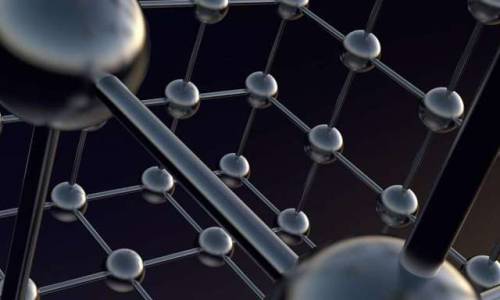#stress and strain
Stable Hard-Sphere Packings with Arbitrarily Low Density
A new strategy for packing hard spheres of different sizes could lead to novel ways of creating strong, lightweight materials.
[…]
To create structures that are light and strong, researchers leverage the interplay between internal compression and tension, removing unnecessary material that does not contribute to this balance of forces. Because packed assemblages of hard spheres lack internal tension, the conventional wisdom is that reducing the density of such structures eventually leads to instabilities, establishing limits on how strong and lightweight they can be. Now, Robert Dennis and Eric Corwin at the University of Oregon have found a way to pack hard spheres at vanishingly small densities such that their structures are as light as desired while remaining mechanically stable [1].
Post link
Properties of strained graphene and other strained two-dimensional atomic materials
Salvador Barazza-Lopez, associate professor of physics at the University of Arkansas, is part of a team that published a review article on the properties of strained graphene and other strained two-dimensional atomic materials in the prestigious Reports of Progress in Physics, a review-style journal published by the Institute of Physics in the United Kingdom that has a large impact factor of 14.3.
Materials that are atomically thin can be thought as membranes. Membranes bend to adapt to other materials, and change their properties when pulled from two opposite edges. Electronic and optical properties of atomically-thin membranes are modified as a result of bending and stretching, and the 62-page published article provides a detailed descriptions of these effects.
“This comprehensive project was led by Gerardo G. Naumis at the Institute of Physics National University of Mexico, and it took about one year to be completed.” Barraza-Lopez said. “Besides giving me the opportunity to summarized work performed at Arkansas over the last six years, the two weeks spent working at the Institute were memorable.” Continued access to the Trestles supercomputer at the Arkansas High Performance Computing Center was crucial for completing many of these studies.
Post link


